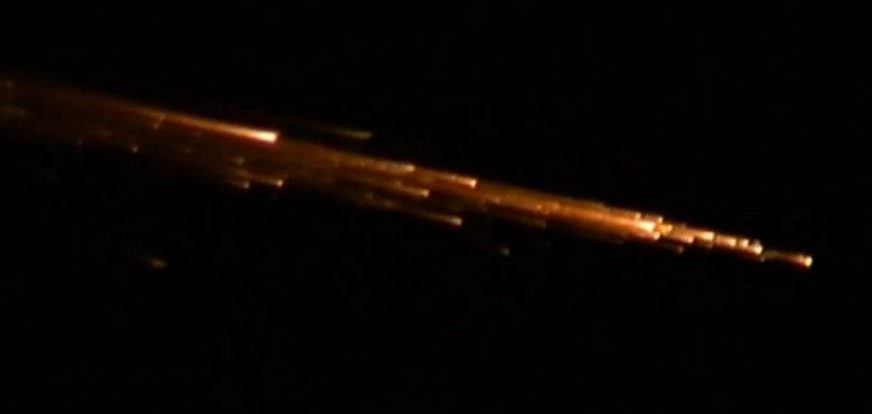Seeing a fireball erupt in the sky is not an unusual occurrence. Especially during late July, when the Delta Aquirid meteor shower is so near to peaking. At times like this, dozens of fiery objects can be observed streaking across the atmosphere. But on this occasion, the light show that was spotted over Las Vegas earlier this week had a stranger cause.
The fireball appeared on Wednesday July 27th, at around 9:30 p.m. (Pacific Time), and could be seen from California to Utah. News and videos of the fiery apparition were quickly posted on social media, where astronomers began to notice something odd. And as it turned out, it was NOT the result of a meteor shower, but was in fact was the second stage of a rocket hitting the atmosphere, courtesy of the Chinese National Space Agency.
Such was the conclusion of Phil Plait, an astronomer and writer for Slate. After seeing a video shot of the display, he took to Twitter to question the explanation that it was the result of the Delta Aquirids. Based on his observations, he asserted that the event was actually the result of space debris burning up in the atmosphere.
His posts encouraged Jonathan McDowell, an astronomer at the Harvard-Smithsonian Center for Astrophysics, to do some checking. After looking into the matter, McDowell determined that the cause was a spent stage of a Chinese rocket falling back to Earth. As he posted on Twitter:
“Observation reports from Utah indicate the second stage from the first Chang Zheng 7 rocket, launched Jun 25, reentered at 0440 UTC.”
The Chang Zheng 7 is the latest in a line of Chinese rockets. It’s name translates to “Long March”, in honor of Mao’s forces marching into China’s interior during the Second Sino-Japanese War (1937-1945). A liquid-fueled carrier rocket designed to handle medium to heavy payloads, this rocket was developed to replace the Chinese Space Agency’s Long March 2F crew-rated launch vehicle.
This rocket is expected to play a critical role in creation of the Chinese Space Station, and will serve as the launch vehicle for the Tianzhou robotic cargo spacecraft in the meantime. Monday, June 25th was the inaugural launch of the rocket, and after the second stage was spent, it re-entered the Earth’s atmosphere at 04:36 UTC (9:36 p.m. Pacific Time) on Wednesday.
The 2nd stage then began to burn up as it moved across the sky from southwest to northeast, moving at speeds of 20,000 km/h (12,427 mph). It eventually disintegrated after becoming visible all across the south-western US, burning up at an altitude of about 100 km (62.13 mi). At this point, observers reported hearing a large boom, and many were fortunate enough to get the whole thing on video (as you can see from the ones included here).
While discarded space vehicles burn up in the atmosphere all the time, this was one of those rare occasions when the object happened to weight 6 metric tons (6.6 short tons)! We’re just fortunate that space launches are so rigorously planned so as to prevent them from causing accidents and extensive property damage, unlike certain meteorites that show up uninvited (looking at you Chelyabinsk meteor!)
TOTH: Slate


Wed. night I ‘went up the mountain’ to my star gazing spot and had just finished setting up my 12 1/2″ Newt. when this sucker appeared in the Southeast. At first I thought, “Cool, a Perseid!” but when it kept getting brighter and brighter and continued across the sky, I knew it was something else. I was able to swing my scope around and catch a couple seconds of it’s flight. It was VERY impressive. I could see multi-colored streamers flowing off the ‘coma’ that looked similar to fireworks sparklers.. WAY cool! I looked away from the scope to re position but by that the time I got oriented again it slipped over the horizon. It was actually kind of scary.. what was it??? Incoming ICBM? Martians? LOL…..
You saw it through your telescope? I don’t suppose you got any pics?